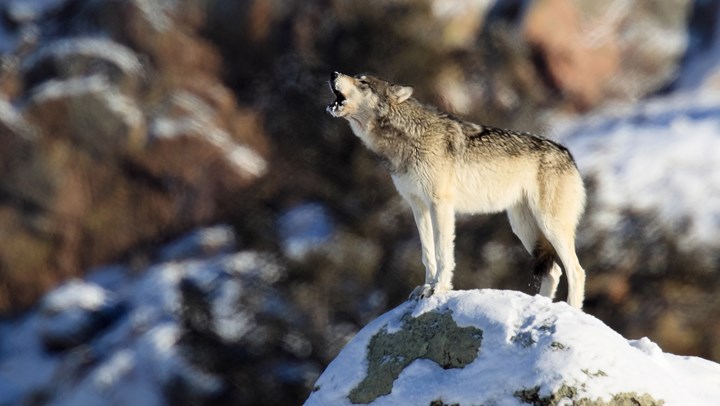
by Keith Crowley - Friday, August 4, 2017

A three-judge panel of the U.S. Circuit Court of Appeals in Washington, D.C., handed down its 54-page ruling on Great Lakes Wolves on Aug. 1. For now gray wolves will remain protected under the Endangered Species Act (ESA) and state management will not be allowed. At first blush it looks pretty bleak for those who recognize that wolves are not endangered or threatened in the Western Great Lakes states of Michigan, Wisconsin and Minnesota. In short, the ruling prohibits delisting of the Western Great Lakes wolf population until certain criteria are reevaluated and met.
While it may appear to be a win for the animal rights organizations that sued to prevent delisting, the recent U.S. Sportsman’s Alliance (USSA) report points out that “the appellate court ruled in favor of sportsmen on the most important legal issue in the case regarding the distinct population segment (DPS) definition in the Endangered Species Act and the Fish and Wildlife Service’s DPS Policy.”
The court opinion states, “aspects of the Segment Policy plainly work in both the listing and delisting directions. … The Solicitor’s Opinion, formally adopted by the Service, has now explicitly interpreted the Act to allow the segment tool for delisting.” In layman’s terms, this means the Humane Society of the United States (HSUS) and the other animal rights organizations who filed the lawsuit in 2014 can no longer argue that wolves must recover across their entire historic range before delisting can occur. The “segment model” of management can be allowed under the terms of the ESA.
That is indeed a win for proponents of state-managed wolf populations. The court determined that whether there are wolves in Illinois, the Dakotas, Indiana, Ohio, Iowa or other regions outside the core recovery area is irrelevant, as the wolves in the core Western Great Lakes are not only secure, but thriving. “Further, for all six of the States with no wolf plans, the Service reasonably concluded that the deaths of any wolves that might enter those States would be so minimal as to pose no threat to the segment’s survival,” states the ruling. Precedent like that is important in what will surely be more legal wrangling as states with huge wolf populations—Minnesota, for example, with a current wolf population of more than 2,700—try to regain control of their own natural resources.
Coincidentally, on the same day the recent court ruling was announced, the Wisconsin Department of Natural Resources (WDNR) sent out another bulletin on hunting dog deaths by wolf attacks that had occurred over the last few days. Wisconsin has had an ongoing problem with hunting dogs, especially hound breeds, being attacked and frequently killed by wolves in the northern third of the state. WDNR maintains an updated Web page regarding wolf depredations on pet dogs, issues warnings and creates mapped caution zones so hunters know where active wolf packs are likely to be present.
Last month alone, seven hunting dogs were attacked by wolves—six of them fatally. In 2016, 40 dogs were confirmed killed by wolves, almost doubling the previous record of 23 dogs killed. Of course the rabid animal rights groups will insist that only bear hounds are targeted by wolves since they operate well away from their owners. They also contend that what they call the “risky practices of bear hunters” are responsible for the attacks. However, what this really means is that anti-hunters are trying to interfere with black bear management in Wisconsin along with wolf management.
E-mail your comments/questions about this site to:
[email protected]
Proudly supported by The NRA Foundation and Friends of NRA fundraising.
